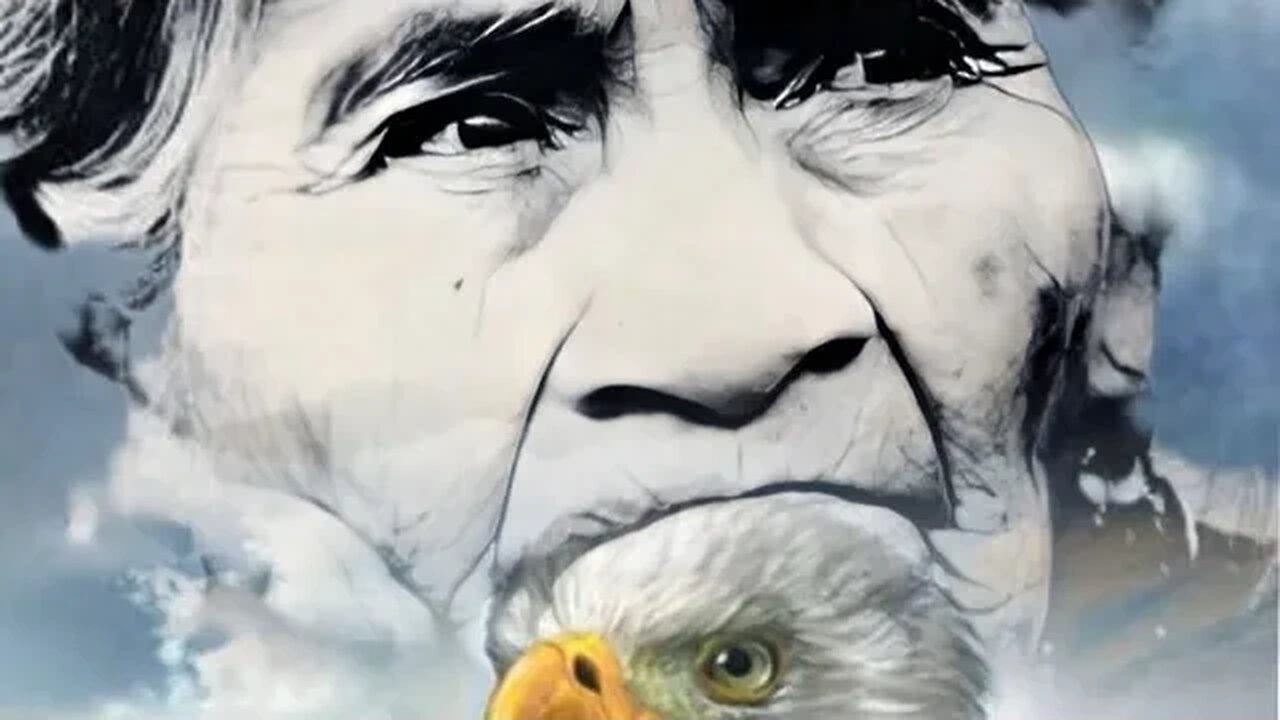Premium Only Content

Maria Sabina: Sacred Eagle Woman
María Sabina Magdalena García. Known as the “priestess of mushrooms,” she was probably the most famous Mexican healer to have ever lived. Her history and reputation led her to serve as a bridge between the mystical and ritual worlds of her people, and the mystical exploration of the Western world.
Born into the Mazatec ethnic group in 1894, she came from a small town called Huautla de Jiménez, in the Sierra de Oaxaca, located in southern Mexico. Her father’s family had already included several shamans. From a very young age, contact with them brought her closer to the region’s traditional ceremonies, which included the intake of hallucinogenic mushrooms (know as “holy children”) as a method of contact with divinity. She first tried the mushrooms at the age of eight. It’s said that she intuitively developed a knowledge of the rituals and their healing power which, in her culture, was attributed to these mushrooms.
Among the Mazatec people, the most common healing method since prior to the colonial period, was the ritual intake of fungi of a species called Mexican Psilocybe and which grow only in a particular mountain range. When visited by someone with some physical or spiritual condition, Sabina served as a guide on the patient’s journey to, and return from, spiritual realms (along with a cure for the illness). To Sabina, mushrooms were an instrument for connecting dimensions and realities that happen in parallel. Because of their peculiarity, intensity, and various reports of effectiveness, Sabina’s healing sessions became very popular in the Mexico of the early 1950s.
Sabina’s total dedication to the healing practice began around the middle of her life during that same decade. Her healing ceremonies with fungi included Mazatec chants, tobacco smoke, mezcal consumption, and ointments extracted from medicinal plants. Such rituals were made at night, for it was at this hour that healer was accompanied and guided by the stars to the kingdoms of the afterlife.
Over time, the story of Maria Sabina, her fame, and her mystery, caught the attention of media and personalities from many parts of the world and from other disciplines. One of the first was an American, Robert Gordon Wasson, an economist by profession, best known for his studies in ethnobotany (the interaction between humans and plants). These he made with his wife, Valentina Pavlovna Guercken. Among their various interests was the use of hallucinogenic plants in the rituals of ethnic groups from different parts of the world. Their interest led the couple to visit the Mazatec Sierra on several occasions, and here they heard of the famous healer from Huautla.
In 1955, Wasson and his wife convinced Sabina to receive them. Guided by her, they conducted several “veladas” (vigils) with the fungi, and they documented the entire experience in photos and recordings. They also obtained research samples of the fungi used in the sessions. Two years later, in 1957, an article written by Wasson was published in Life magazine. The text, accompanied by the images, described the research and chronicled the couple’s experiences with Sabina. After its publication, visits by people from all over the world to the healer only multiplied. She was famous.
Domestic and foreign visits increased still further. Many of these visitors were interested purely in psychedelic recreational pursuits. They obviated the history of the ancient practices, and lost respect for the culture and religion of the Mazatec people. This displeased members of Sabina’s community who argued that she was profiting from their tradition. Huautla de Jiménez was now constantly receiving national and foreign media figures, tourists, artists, intellectuals, anthropologists, researchers, and celebrities. Among them, one might find Aldous Huxley, Alejandro Jodorowski, Carlos Castaneda, Albert Hofmann, John Lennon and Walt Disney.
Still, her popularity gave her some economic stability although her sessions, even until her final days, were paid for with voluntary donations. When she died in 1985, she left behind a controversial legacy. On the one hand, she’d left a compendium of wisdom and medicinal practices by sharing the customs of the Mazatec people with the rest of the world. At the same time, her story contains a lesson in reminding us of the ease with which the modern world consumes ancestral traditions, not always with due respect, but based on fashion, as if they were but one more product.
Among the peoples native to Mesoamerica, the healer or sorcerer is a character whose community function is essential. She communicates this world and that of the gods. As a result, she cures diseases (physical or spiritual), and predicts the future, and even endless possibilities. The figure of Maria Sabina, specifically, was not only a bridge of wisdom and mysticism within her community and between the world of divinity and that of humankind.
-
 15:17
15:17
Literati
1 year ago $0.03 earnedG.I. Gurdjieff: Know Thyself
152 -
 1:57:55
1:57:55
The Charlie Kirk Show
2 hours agoThe Confirmation Marathon | Davis | 1.15.2025
62.6K12 -
 LIVE
LIVE
The Kevin Trudeau Show
3 hours agoBrainwave Secrets That Attract Millions | Ep. 83
161 watching -
 8:52
8:52
Guns & Gadgets 2nd Amendment News
4 hours agoSELF DEFENSE: How Would You React?
9154 -
 24:03
24:03
Stephen Gardner
1 day ago🔥Steve Bannon VOWS TO DESTROY Elon Musk's relationship with Trump!!
30.3K122 -
 53:20
53:20
Grant Stinchfield
1 hour ago $0.47 earned"Most Secure Border in Years," Team Biden Fiction on Full Display
4K3 -
 LIVE
LIVE
The Dana Show with Dana Loesch
2 hours agoTRUMP'S PICKS SQUARE OFF | The Dana Show LIVE On Rumble!
559 watching -
 37:42
37:42
The Boomer Effect
1 hour agoWhat In The Universe Is Going On? Are We Alone?
1.45K -
 59:56
59:56
The Dan Bongino Show
4 hours agoThe Hapless, Goon Democrats Face-Plant At Hegseth’s Hearing (Ep. 2401) - 01/15/2025
517K1.28K -
 2:28:17
2:28:17
Steven Crowder
1 day agoWe’re Back: Hegseth’s Confirmation, Cali Wild Fires & Elon's Free Speech Fiasco
412K361